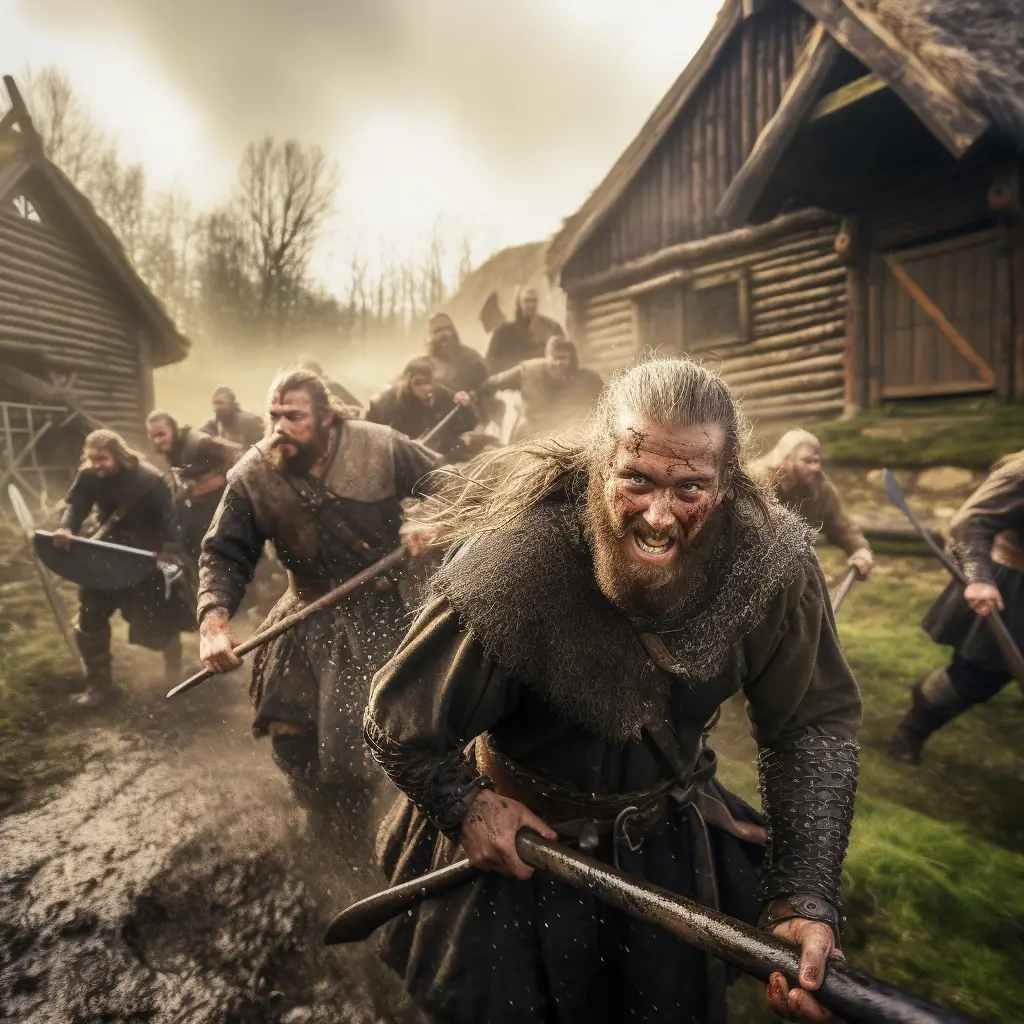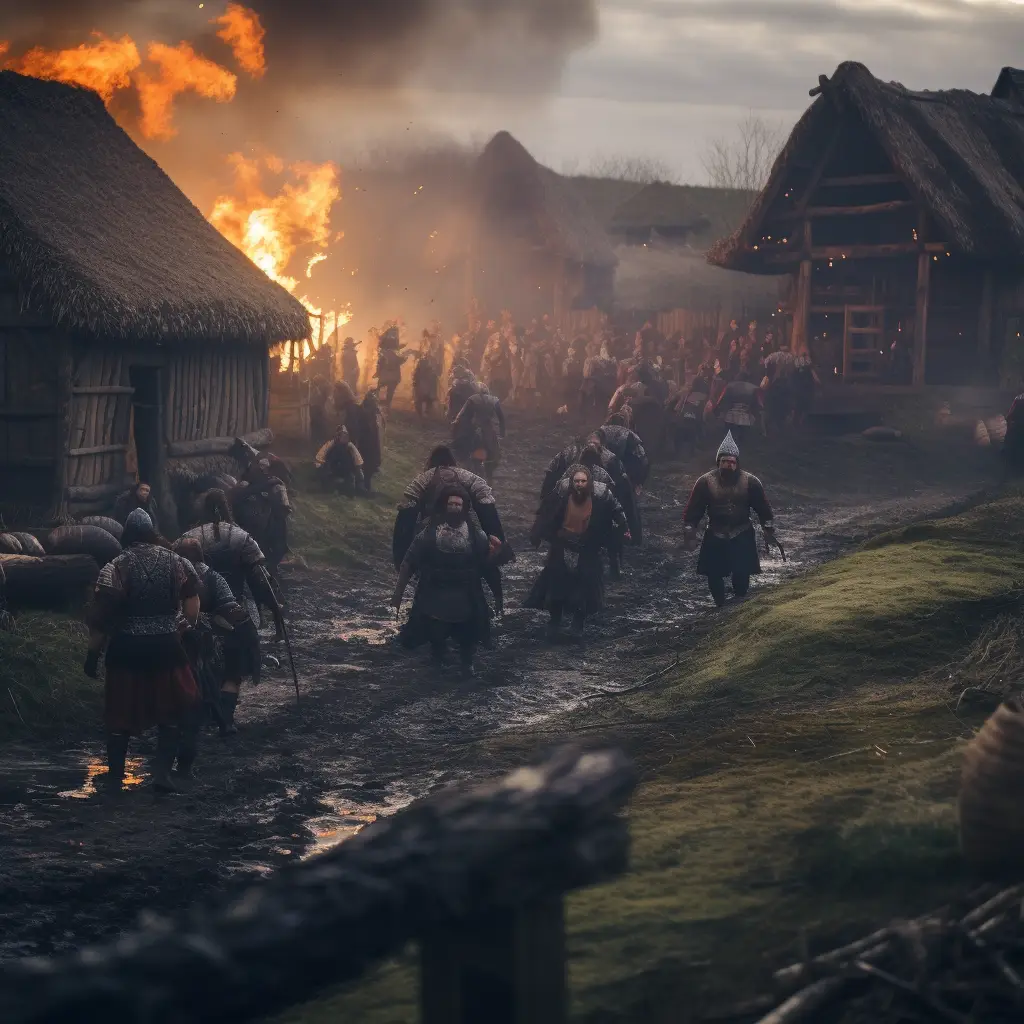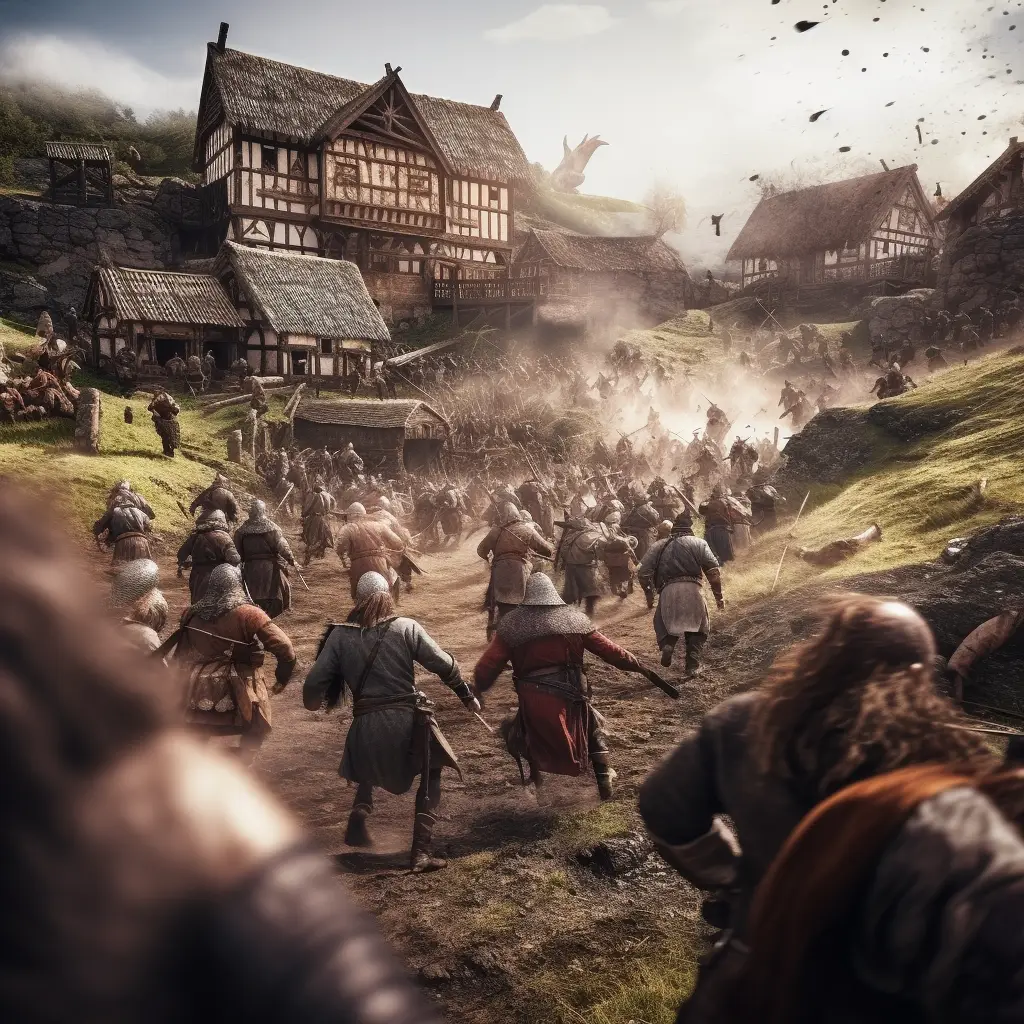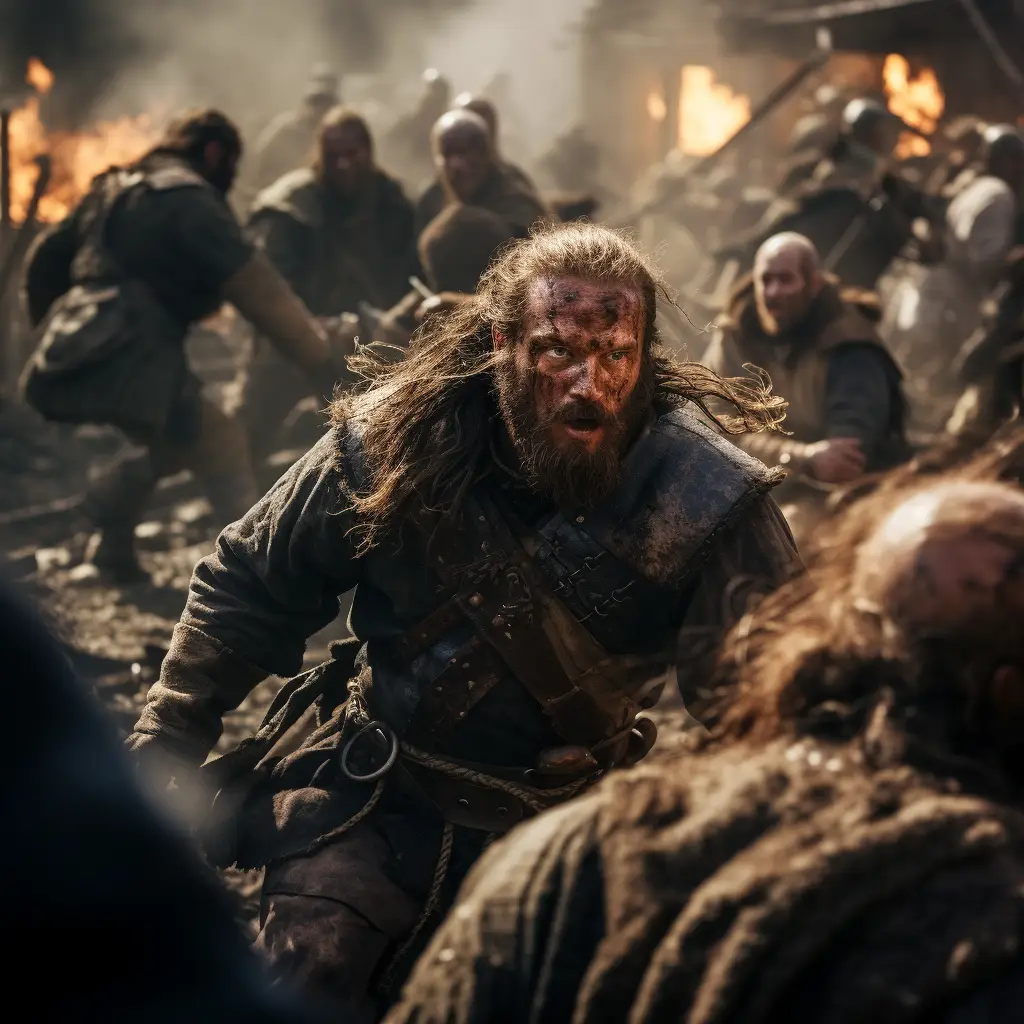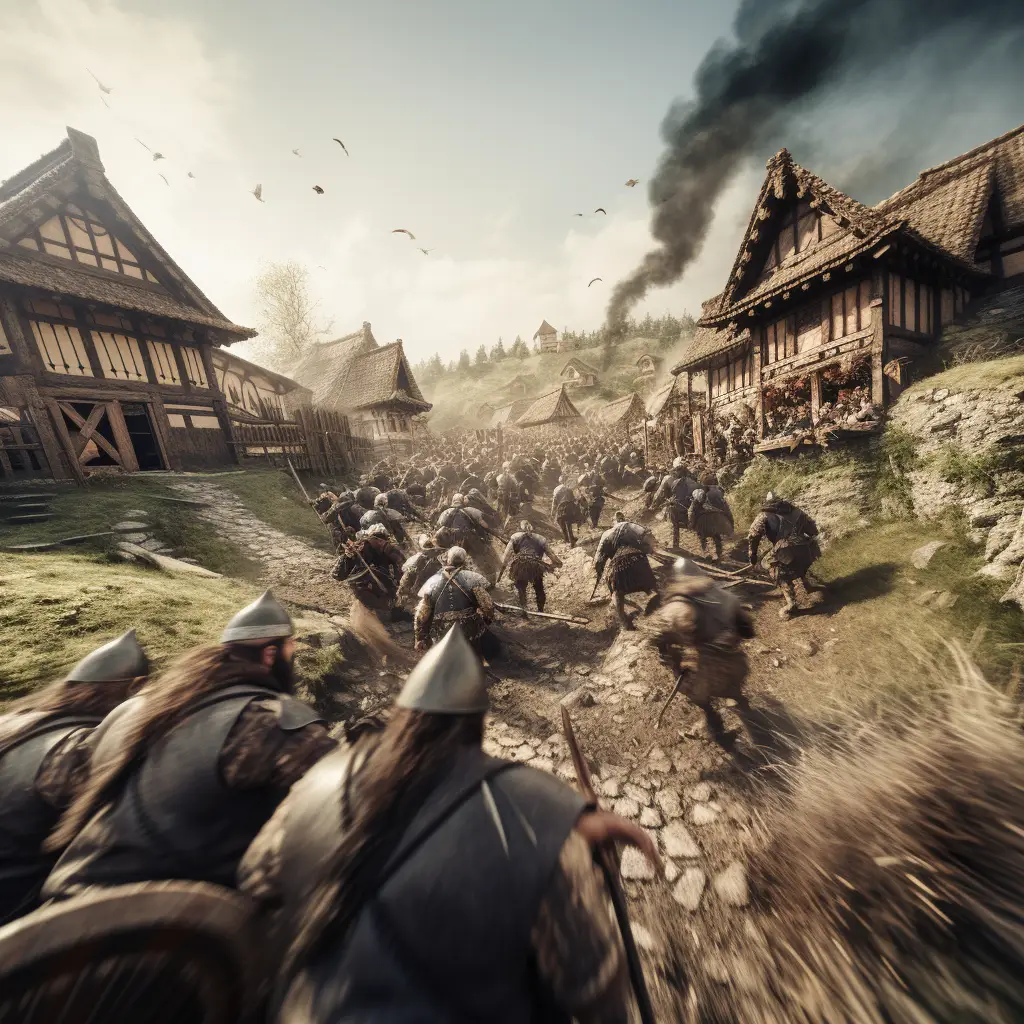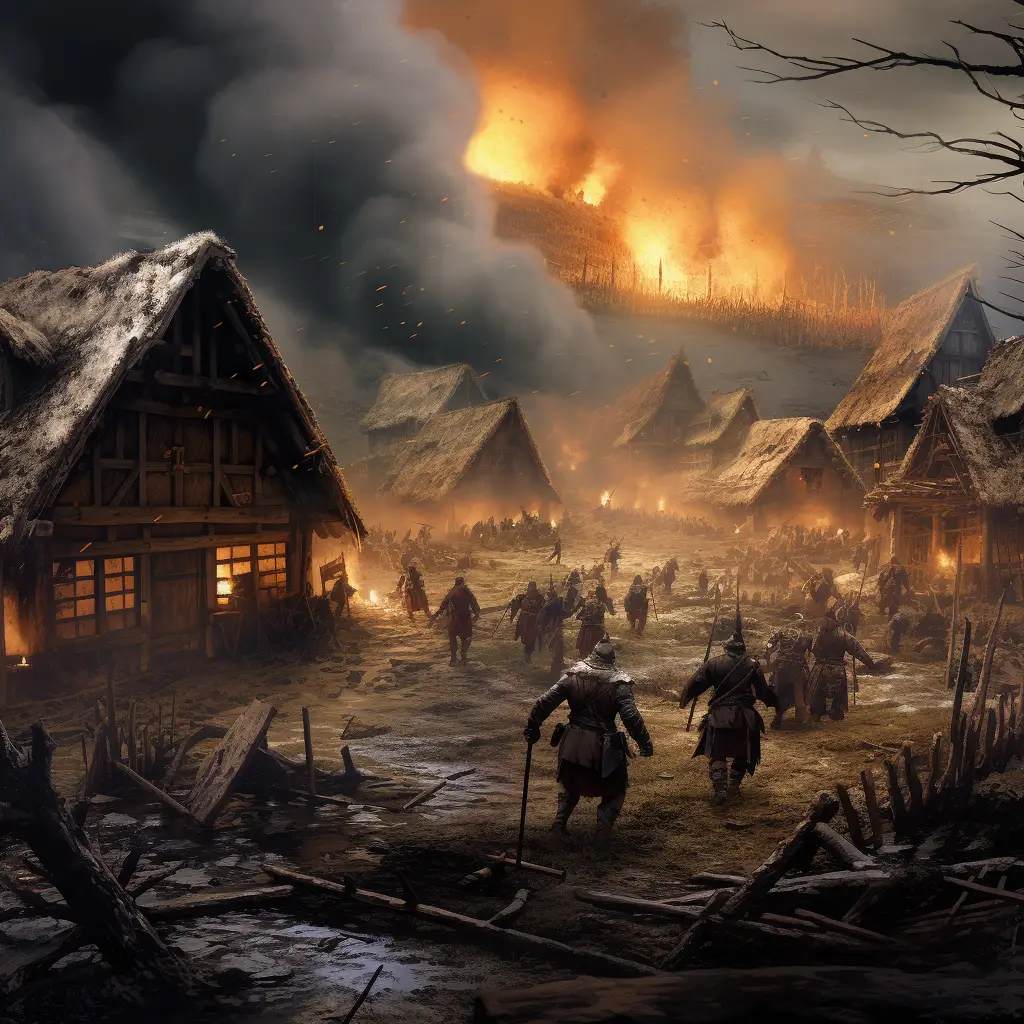Viking raiding was a significant aspect of Norse culture during the Viking Age, roughly spanning from the late 8th to the 11th century. Vikings, skilled sailors and warriors from Scandinavia (modern-day Norway, Sweden, and Denmark), conducted raids primarily for wealth, resources, and sometimes land expansion.
These raids were often swift and strategic, targeting monasteries, coastal villages, and wealthy towns across Europe, especially in the British Isles, France, and the Baltic region. Viking longships, with their shallow draft and flexibility, enabled them to navigate rivers and coastal areas, making surprise attacks and quick getaways.
While raiding was undoubtedly brutal and caused widespread fear and destruction, it also had complex motivations. It provided opportunities for young men to gain wealth and prestige, as well as to escape overpopulation and political turmoil at home. Additionally, trade and cultural exchange sometimes accompanied Viking expeditions, leading to the spread of Norse influence across Europe.
Overall, Viking raiding played a significant role in shaping the history and perceptions of the Viking Age, leaving a lasting impact on the regions they targeted and contributing to the broader tapestry of medieval history.
Several Viking raids have become famous due to their historical significance and impact. Here are a few notable ones.
Lindisfarne (793): The raid on the monastery of Lindisfarne in Northumbria, England, is often considered the beginning of the Viking Age. The sudden attack on this religious center shocked Christian Europe and marked the start of Viking raids in the British Isles.
Paris (845): Vikings, under the leadership of Ragnar Lothbrok or possibly his sons, launched a major siege on Paris, then the capital of the Frankish kingdom. Despite the city’s defenses, the Vikings managed to sail up the Seine River and besiege Paris for several months, eventually receiving a ransom to lift the siege.
Algeciras (859): A Viking fleet led by Hastein and Björn Ironside sailed into the Mediterranean, raided cities along the coast of modern-day Spain and Portugal, and even attacked the Islamic city of Algeciras, demonstrating the extent of Viking exploration and raiding.
Wessex (865-878): The Great Heathen Army, composed of Danish Vikings, invaded the Anglo-Saxon kingdom of Wessex in England. Led by leaders like Ivar the Boneless, Halfdan Ragnarsson, and Guthrum, they carried out numerous raids and battles, eventually leading to the establishment of the Danelaw in northern England.
Sack of Nantes (919): Vikings, possibly from Ireland, launched a devastating raid on the city of Nantes in Brittany, France. This raid is significant because it exemplifies the continued threat of Viking attacks even as the Viking Age was drawing to a close.
These raids, among others, contributed to the widespread fear and impact of Viking activities across Europe during the Viking Age and left a lasting mark on the regions they targeted.
Several Viking raiders became famous for their exploits during the Viking Age. Here are a few notable figures.
Ragnar Lothbrok: While the historical existence of Ragnar Lothbrok is debated, he is a legendary figure in Viking lore. According to sagas and legends, Ragnar was a Norse hero and king who led raids on various parts of Europe, including England and France. His exploits are depicted in the TV series “Vikings.”
Ivar the Boneless: Ivar, son of Ragnar Lothbrok, was a prominent Viking leader known for his cunning tactics and ruthlessness. He played a key role in the Great Heathen Army’s invasion of England and is featured prominently in Norse sagas and legends.
Erik the Red: Erik Thorvaldsson, also known as Erik the Red, was a Norse explorer and raider who is credited with establishing the first Norse settlement in Greenland. He is also the father of Leif Erikson, who is believed to have been the first European to reach North America.
Harald Hardrada: Harald Sigurdsson, known as Harald Hardrada, was a Norwegian king and warrior who led a remarkable life of adventure and conquest. He participated in raids across Europe and the Byzantine Empire before eventually becoming king of Norway. His failed invasion of England in 1066 led to his death at the Battle of Stamford Bridge.
Björn Ironside: Björn Ragnarsson, son of Ragnar Lothbrok, was a legendary Viking chieftain who led raids in France, Italy, and the Mediterranean. He is often associated with the Siege of Paris in 845 and is depicted in various sagas and legends.
These Viking raiders, among others, left a lasting legacy through their daring exploits and contributions to Viking history and mythology.
